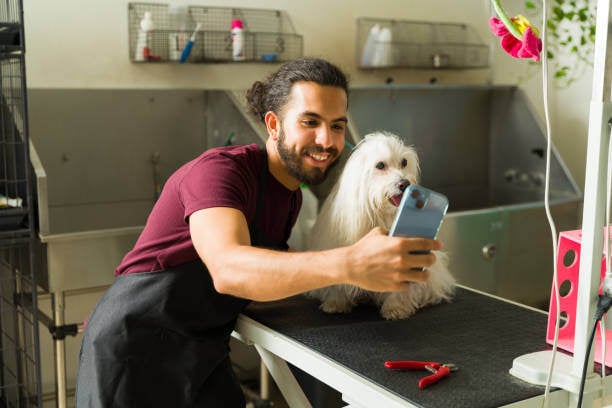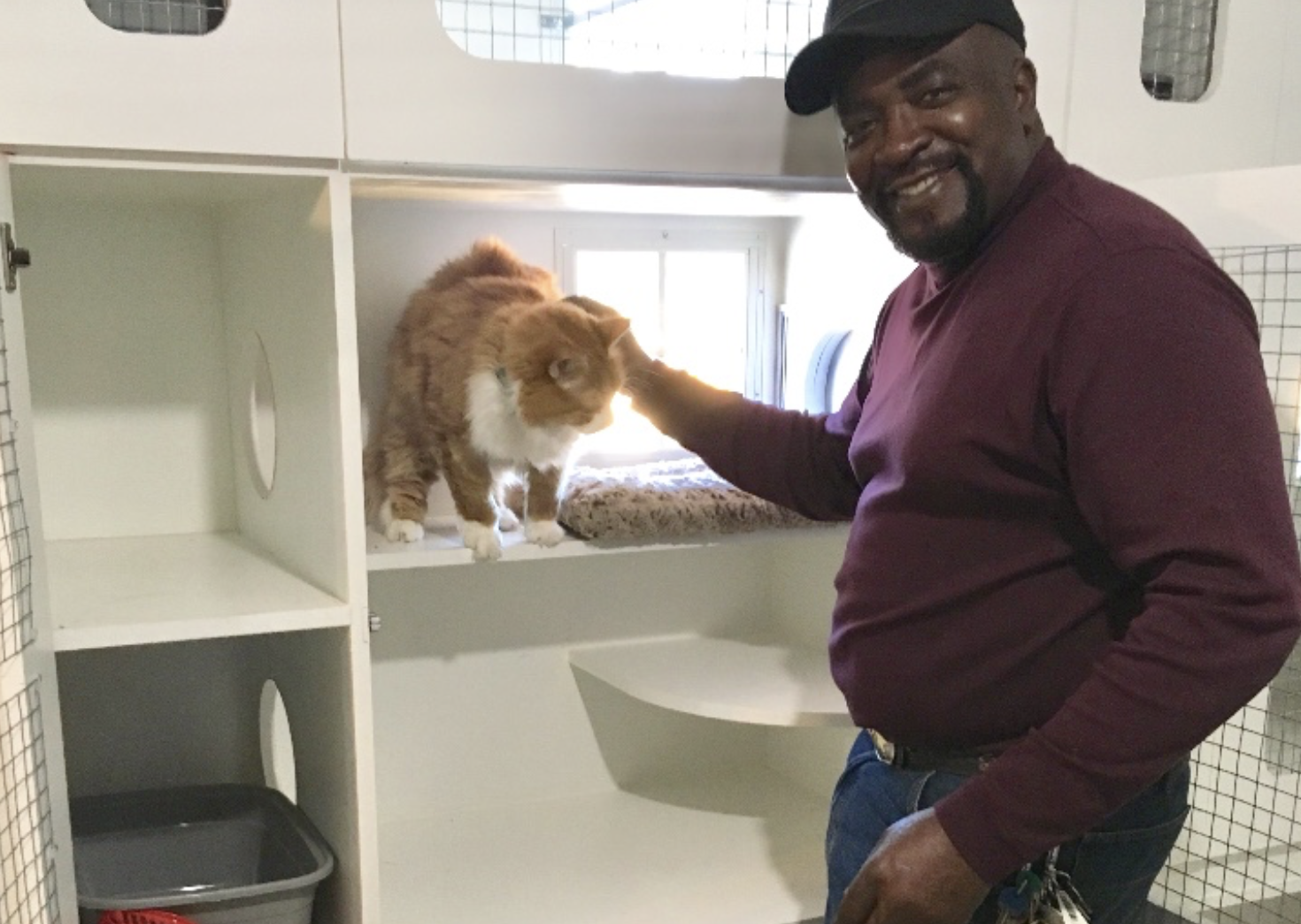The pet industry is vast and is only expected to grow. There are 82 million pet-owning households in the U.S., and sales in 2024 were projected to grow to $150.6 billion.
But to be successful in this industry, your pet-care business needs to make itself known to its customers. You need an effective, comprehensive marketing plan to reach your target audience that raises awareness, fosters demand, and preserves customer engagement and loyalty. So, how do you craft a strong plan amidst the busyness of running your pet-care business?
Whether you offer grooming, boarding, training, or veterinary services, a strategic marketing plan can help your business stand out and preserve long-term growth. Let's run through the digital pet marketing basics and some effective marketing strategies you should incorporate into your plan.
Digital Pet Marketing 101: The Basics
The Benefits of Digital Marketing for Pet Businesses
If you’re considering launching your first digital marketing campaign or simply strengthening your existing efforts, you may wonder if it’s worth the additional time and effort required. The short answer? Yes!
Digital marketing offers many benefits, especially for smaller, locally owned businesses looking to connect with their communities. Here are some of those benefits:

- Reaching wide audiences. The average American spends over 4.5 hours> on their phones per day. With an effective digital marketing strategy, you can take advantage of these scrolling habits to get in front of new and current customers whenever they pull out their phones. Plus, you can easily reach those outside your local community (great for online shops!).
- Regularly engaging existing customers. As mentioned, you’ll be able to reach your customers whenever you want, wherever they are, which keeps your business in their minds. Engage them regularly with emails promoting deals, reminders to rebook grooming appointments, or social media posts about new products and services.
- Driving additional revenue. Digital marketing aims to drive conversions that earn you revenue, whether purchasing a product or booking an appointment. This revenue stream can also be fairly passive. Once you create the content and set a posting schedule, all you’ll need to do is click “Post” or “Send.”
- Increasing brand awareness and recognition. Let’s say you run a dog grooming business. You want your customers to look at their dirty or overgrown pup and think of your business first—the way to do this is by increasing awareness of your brand. Digital marketing achieves this by first reminding users your brand exists and then connecting your brand to the need it fulfills.
Robust, polished marketing campaigns can also establish a sense of trust and credibility toward your brand. A thoughtful communication strategy makes you appear professional, and you can use these messages to highlight your expertise, engage with customers on a micro level, and highlight positive customer reviews and testimonials.
Defining 3 Types of Media
There are three main types of media in marketing:

- Owned media: Content that your business creates and has complete control over.
- Example: Your website or social media posts.
- Earned media: Content that others create about your business that you may or may not have some level of control over. This content type can have a significant impact on customer’s buying decisions.
- Example: Being featured in a local shopper’s guide or an unpaid social media post from an influencer.
- Paid media: Content your business pays to promote on a platform it does not own. Typically, your business does have control over the creative aspects and scheduling of this content.
- Example: A Google Ad or paid partnership with an influencer.
Each of these media types is important in different ways, and well-rounded communication strategies use all three. Research shows that, on average, marketers allocate 32% of their budget to owned media, 24% to earned media, and 25% to paid media.
Determine a split that works for your budget and needs, evaluate the success of each media type, and adjust your strategy accordingly.
5 Digital Marketing Strategies to Grow Your Reach
1. Build a strong online presence.
In today's digital age, having a robust online presence is crucial. Start with a professional, user-friendly website that outlines your services, pricing, and contact information. Include high-quality photos and testimonials to build credibility.
Ensure your website is mobile-friendly, as many pet parents search for services on their phones. Additionally, follow web accessibility guidelines so anyone can navigate and enjoy your site.
Use search engine optimization (SEO) techniques to improve your website's visibility on search engines. Get started with these basic best practices:
- Use relevant keywords throughout your website. Select keywords like "pet grooming," "dog boarding," or "veterinary services" to attract organic traffic. Remember to target both informational and conversion-focused keywords to reach prospective customers at every stage of the buying funnel. Additionally, don’t be afraid to target highly specific, longtail keywords that attract highly qualified leads (e.g., “luxury dog boarding services for senior dogs”).
- Create high-quality, informative blog content. Regularly update your blog with informative content on pet-care tips, industry news, and success stories to engage your audience and improve your SEO ranking. Focus on writing content that highlights your expertise and unique perspectives rather than blindly following what your competitors do.
- Optimize images and videos for faster loading. Ensure images and videos are properly sized to shave a few milliseconds off page load speeds (it really does make a difference!). As a general rule of thumb, images for web use should be no more than about 200 kilobytes (KB).
Encourage your customers to contribute user-generated content to bolster your online presence. For example, let’s say a customer visits your dog grooming business. After their service, encourage them to post pictures of their pet’s freshly bathed and trimmed coat on social media and tag your business. This will show off your work and reach that customer’s followers.
Don’t forget to show your appreciation by engaging with these posts! Like and comment to express your gratitude for their support.
2. Leverage social media.
Social media platforms like Facebook, Instagram, and LinkedIn are powerful tools for reaching pet parents. Share engaging content such as pet-care tips, cute pet photos, and behind-the-scenes looks at your business. Videos of pets enjoying your services can also be very effective.
Run targeted ad campaigns on social media to reach specific demographics, such as local pet parents or those interested in pet adoption. Use features like Instagram Stories and Facebook Live to engage with your audience in real time. Encourage satisfied clients to leave reviews and share their experiences on your social media pages to build a community of loyal followers.
Don’t forget about some of the lesser-used social media platforms like Pinterest, Reddit, or Snapchat. While these platforms may not be your first thought or boast as many daily users as Instagram, they can be a good choice if they’re a part of your audience’s heavy rotation. For instance, a potential customer might turn to the r/DogAdvice subreddit to get grooming supply recommendations and stumble across a paid ad for your online shop under relevant posts.
3. Utilize email marketing.
Email marketing is a cost-effective way to stay connected with your clients. Collect email addresses from your clients when they book an appointment, make a purchase, or sign up for a membership or subscription. Send regular newsletters with updates, promotions, and pet-care tips.
These tips will help you craft relevant emails that engage users and promote conversions:
- Personalize emails to increase engagement. Personalization makes clients feel valued, understood, and appreciated. To achieve personalized messaging on a larger scale—because no one has the time to write individual emails to each and every customer—segment your email list to target specific groups. For example, you might segment by the type of pet the customer has and share updates and promotions relevant to their cat, dog, or lizard.
- Send regular newsletters with valuable content. Keep customers in the loop about your business’s ongoing activities by sending email newsletters regularly, such as once or twice a month. Share updates on everything from upcoming deals to events hosted at your business and pet care tips.
- Use automated emails for reminders and follow-ups. Automated emails, like appointment reminders and follow-up messages, enhance client experiences and ensure consistent communication. They’ll also reduce late arrivals and no-shows, saving you money, time, and stress.
Follow email best practices to increase the chances of your messages being read. For example, keep your subject lines brief—experts recommend no more than nine words or 60 characters.
You can also use A/B testing to assess the effectiveness of your emails. These tests involve creating two different versions of the same email message with one small change and sending them to similar audiences to gauge their reactions. For example, you could A/B test your email images by sending identical emails with different header images. Track metrics such as click-through rates to determine which messages saw a better response.
4. Engage with your community.
Building a strong presence in your local community is key to attracting and retaining clients. We recommend using the following strategies to integrate your business in the community:
- Become a positive community steward. Participate in community events, sponsor local pet-related activities, and host workshops or seminars on pet care. Offer free resources, such as pet health check-ups or grooming demonstrations, to showcase your expertise and commitment to the community.
- Collaborate with local businesses to expand your reach and attract new clients. Partner with pet stores, veterinary clinics, and pet-friendly cafes to cross-promote each other's services. You can offer joint promotions or participate in local events, such as pet fairs and adoption drives. Consider placing flyers or business cards in these local establishments. In return, you can display their promotional materials in your business. This mutual support helps build a network of trusted local businesses that pet parents can rely on.
- Engage with your community online. Respond promptly to inquiries on social media and online review platforms. Show appreciation for positive reviews and address any negative feedback professionally and constructively.
Studies have shown that 67% of consumers trust “local businesses” more than internet-only brands, demonstrating that community members want your business to join the rich tapestry of your local community.
5. Offer promotions and loyalty programs.
Promotions and loyalty programs are great ways to attract new clients and retain existing ones. Offer discounts for first-time clients or bundle services at a reduced rate. Seasonal promotions, such as holiday-themed grooming packages, can also attract customers.
Implement a loyalty program to reward repeat clients. Offer perks such as:
- Free service after a certain number of visits
- Discounts for client referrals
- Exclusive offers for repeat customers
- Discounts on products or merchandise
These incentives encourage clients to return and recommend your services to others.
Wrapping Up
Effective marketing strategies are essential for growing your pet-care business. Seamlessly blending several strategies and communication channels—from SEO to social media to community engagement—will enhance your reach, visibility, and credibility within the competitive pet-care industry.
While crafting successful marketing strategies is far from easy, the right tools will make you feel like an expert marketer in minutes. To discover how our pet business software can enhance your marketing efforts, book a Gingr demo today!
Check out these additional resources to learn more about what you can do to make your business thrive:
- Learn Industry Secrets With This Dog Marketing Playbook. Looking for a detailed, step-by-step guide to crafting the perfect pet marketing campaign? Look no further!
- 12 Must-Try Dog Daycare Ideas for Happy, Healthy Pups. Spice up your dog daycare’s daily activities with these fun ideas that you can easily promote via your marketing campaigns.
- Creating a Doggy Daycare Social Media Strategy for 2025. Learn how to craft consistent, engaging social media messaging to promote your doggy daycare or other pet business.
Subscribe to the Gingr Blog









